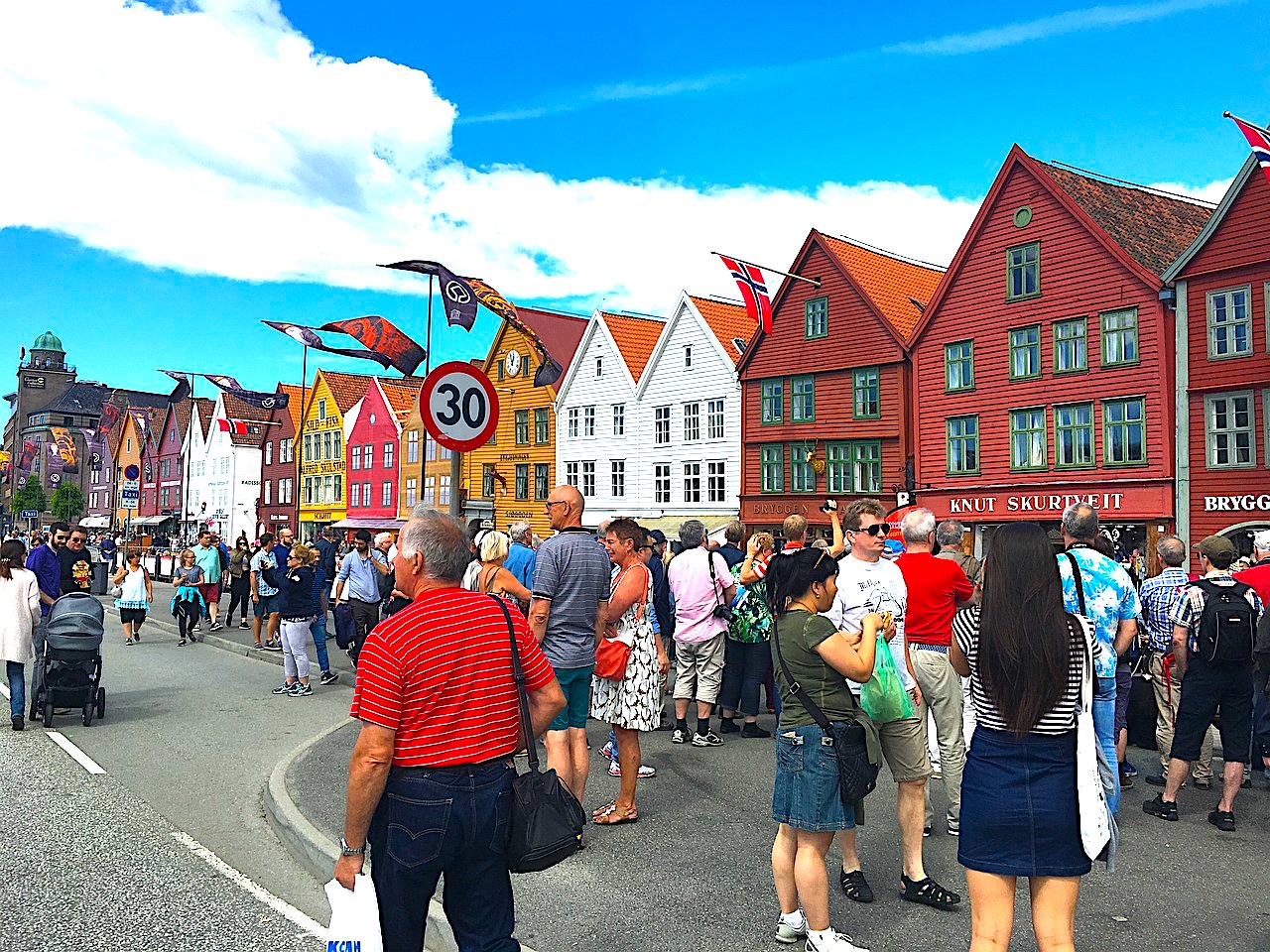Bergen, Norway’s second-largest city, is a place rich in history and culture. While many visitors come for the picturesque scenery and vibrant city life, there is so much more to explore. In this article, we delve into some of the lesser-known, intriguing historical facts about Bergen. From the imposing Bergenhus Fortress to the fascinating Bryggens Museum, discover the city’s hidden tales and take a deep dive into its past. Whether you’re embarking on a free tour in Bergen or organizing private tours, let this guide be your compass to Bergen’s historical wonders.
- Bergen’s Hanseatic Heritage
Bergen was once a significant trading center for the Hanseatic League, a powerful medieval confederation of merchant guilds and market towns in Northern Europe. The UNESCO-listed Bryggen Wharf is a testament to this thriving trade era. To learn more about Bergen’s Hanseatic history, visit the Bryggens Museum (https://www.bymuseet.no/en/museums/the-bryggen-museum/), which showcases archaeological finds and explores the city’s development during the Hanseatic period.
- Bergenhus Fortress: A Symbol of Power and Protection
Bergenhus Fortress , one of Norway’s oldest and best-preserved fortresses, has played a crucial role in Bergen’s history. The complex includes two main buildings – Haakon’s Hall and the Rosenkrantz Tower – which have served various functions over the centuries, including royal residence, military base, and administrative center. The fortress also played a vital role in World War II, when it was occupied by German forces and used as a regional command center.
- Historic Nordnes: A Vibrant Cultural Hub
The Nordnes peninsula, an area steeped in history, was once the center of Bergen’s shipbuilding industry. Today, it’s a vibrant cultural hub with narrow streets, charming wooden houses, and beautiful parks. The Nordnes Park (https://www.visitbergen.com/things-to-do/nordnesparken-p822793), in particular, is a popular spot for both locals and tourists alike. To get a sense of the area’s past, stroll through its streets and visit the Old Bergen Museum , an open-air museum with over 40 reconstructed wooden houses from the 18th and 19th centuries.
- Bergen’s Role in World War II
Bergen played a significant part during World War II, as it was occupied by German forces from 1940 to 1945. The city was strategically important due to its port facilities and proximity to the North Sea. A lesser-known fact is that Bergen was home to the U-boat bunker, Bruno (https://uboat.net/), which housed up to 12 submarines during the war. The Bergenhus Fortress also played a critical role in the city’s wartime history, as mentioned earlier.
- The Bergen Line: A Historic Railway Connection
The Bergen Line, a historic railway line connecting Bergen and Oslo, was completed in 1909. This engineering marvel traverses some of Norway’s most breathtaking landscapes, including vast mountain plateaus and deep valleys. To experience this historic journey, book a ticket on the Bergen Railway (https://www.vy.no/) and admire the stunning views as you travel between two of Norway’s largest cities.
- The Great Fire of 1702
A significant event in Bergen’s history was the Great Fire of 1702, which destroyed most of the city’s wooden buildings. The fire started in a sailor’s house and quickly spread, leaving over 3,000 people homeless. Following the disaster, Bergen was rebuilt with wider streets and a more organized city plan. Many of the city’s historic landmarks, such as the Bergen Cathedral , were reconstructed after the fire.
- Bergen: The Birthplace of Norway’s National Anthem
Bergen is the birthplace of Norway’s national anthem, “Ja, vi elsker dette landet” (https://en.wikipedia.org/wiki/Ja,_vi_elsker_dette_landet). The song’s composer, Rikard Nordraak, was born and raised in the city. Although he passed away at the young age of 23, his anthem remains a symbol of Norwegian national pride and is played during national celebrations.
- The Bergen International Festival
Bergen is a city renowned for its cultural events, with the Bergen International Festival (https://www.fib.no/en/) being one of its highlights. Established in 1953, the festival showcases a wide range of music, theater, and dance performances, attracting artists and audiences from around the world. The annual event takes place in late May/early June and is a must-see for anyone visiting Bergen during this time.
Conclusion:
Bergen’s rich history is filled with fascinating stories and little-known facts waiting to be uncovered. Whether you’re exploring the city on a free tour, joining private tours, or wandering through the historic streets of Nordnes, you’ll find countless ways to immerse yourself in Bergen’s captivating past. With this guide, you’re well-equipped to delve deeper into the city’s history and create unforgettable memories during your visit to Bergen.






